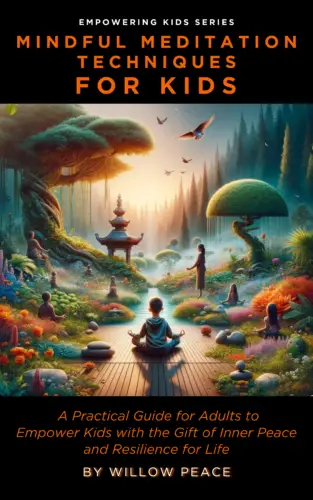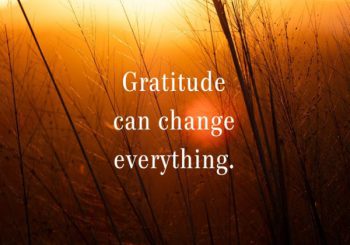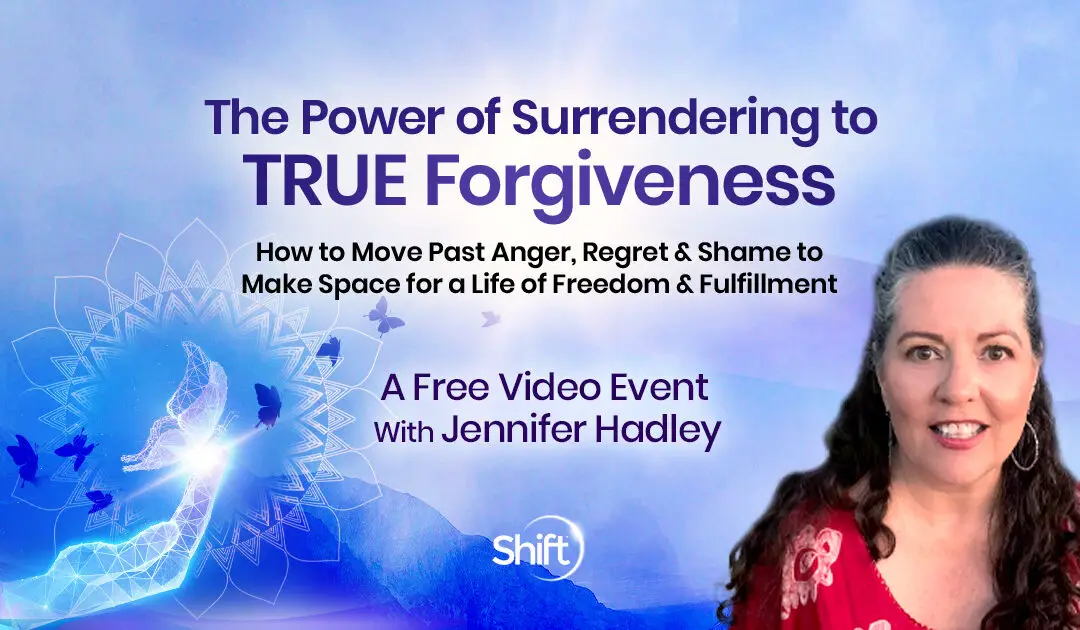By Dakota Flynn
Staff Writer for Wake Up World
In a world where individuality is celebrated, dissolving the ego might seem foreign. Yet, within non-dual traditions, the ego is recognized as the root of separation, the “I” that keeps us from experiencing the wholeness of life. Gratitude, a simple yet profound practice, offers a key to transcending this egoic sense of self and reconnecting with the unity of all existence.
The Ego and Non-Duality
In spiritual terms, the ego is the sense of a separate self—an individual identity that believes it stands apart from the world. This belief creates division, leading to feelings of isolation, dissatisfaction, and longing. Non-duality, on the other hand, is the understanding that we are not separate beings but rather interconnected expressions of a single, unified consciousness.
From this perspective, dissolving the ego means dissolving the illusion of separation. Gratitude can be a powerful practice that supports this process.
How Gratitude Transcends the Ego
1. Shifting Focus from “I” to “We”
When we practice gratitude, we shift our attention from the ego’s narrow concerns—what I want, need, or deserve—to the broader recognition of life’s interconnectedness. Gratitude naturally arises when we acknowledge that the world is not acting solely for or against us but is unfolding as a unified whole.
In moments of gratitude, the ego softens. You’re no longer concerned with reinforcing the story of “me.” Instead, you begin to see how life is a seamless flow of interrelated experiences, people, and events. This shift in perspective can lead to the recognition that the ego is not in control and it doesn’t need to be.
2. Gratitude Reveals Our True Nature
Non-duality teaches that beneath the surface; we are boundless awareness—the source from which all experiences arise. Gratitude aligns us with this truth. When we are grateful, we are fully present, no longer lost in egoic thoughts of past regrets or future desires.
In this present-moment awareness, we glimpse our true nature beyond the individual ego. Gratitude, then, becomes a gateway to self-realization. It reveals that there is no separate “I” to be grateful—just the pure, undivided awareness from which gratitude flows.
3. Acceptance Through Gratitude
The ego thrives on resistance. It constantly judges, rejects, or desires something other than what is. Gratitude, however, is rooted in acceptance. When we are grateful, we accept life as it is, without the ego’s usual need to control or change it.
This acceptance is at the heart of non-dual teachings. Everything is part of the whole, and nothing is separate. When we practice gratitude for all pleasant and unpleasant experiences, we move closer to this non-dual understanding. The ego’s preferences fade, and in their place arises a profound acceptance of what is.
Gratitude and Oneness
Non-duality holds that all phenomena are expressions of the same underlying reality. This realization can transform the way we experience gratitude. Instead of being grateful for specific things—like a sunny day or a job promotion—we begin to feel gratitude for the simple fact of existence itself.
This all-encompassing gratitude dissolves the ego’s habitual categorization of experiences into good and bad. We start to see that everything, even challenges and hardships, is an expression of the same underlying oneness. When we embrace this view, the ego’s tendency to divide and judge fades away, leaving behind only the presence of awareness, where gratitude naturally arises.
Practical Steps for Integrating Gratitude and Ego Dissolution
1. Daily Gratitude Practice
One of the simplest yet most profound ways to begin dissolving the ego is by practicing gratitude daily. Choose a time at the beginning or end of your day to reflect on what you are grateful for, big or small. This could be as simple as appreciating a warm cup of tea, the beauty of nature, or the support of loved ones. The key is to focus not on what the ego desires or wants to change but on what already is.
This practice can help soften the sense of separation by shifting your attention from the narrative of “me” and “my life” to an appreciation of life as a whole. Over time, as you practice gratitude regularly, you’ll notice that your attachment to egoic desires—whether about success, control, or approval—becomes less rigid. Instead, you’ll start feeling a sense of flow with life, accepting each moment.
Tip: To deepen this practice, write down three to five things you’re grateful for daily. By documenting them, you’ll notice patterns in your gratitude, and this written reflection can serve as a reminder when egoic tendencies arise.
2. Present-Moment Awareness
Gratitude is most powerful when practiced in the present moment. Often, the ego distracts us by pulling our thoughts into the past or the future, feeding on regret, worry, or anticipation. When we practice present-moment awareness while being grateful, the ego has less room to thrive. You’re no longer caught up in what you should have or could have; instead, you’re anchored in what you do have right now.
To engage with this step, try fully bringing your attention to the moment you feel grateful. Notice the sensations in your body as gratitude arises. For example, if you’re grateful for a sunny day, pause and feel the warmth on your skin. If you appreciate a conversation with a friend, notice the joy or comfort in that connection without analyzing it. This practice of embodied gratitude takes you out of the mind’s habitual thinking and into the direct experience of life.
Tip: Throughout the day, pause and ask yourself, “What can I appreciate right now?” Whether the breath moving in and out of your lungs or the sound of the wind, allow gratitude to ground you in the present moment.
3. Gratitude in Challenging Times
One of the greatest tests of gratitude comes when life doesn’t go as planned. The ego thrives in resistance, clinging to preferences and expectations. When things don’t align with these expectations, the ego often responds with frustration, disappointment, or even anger. Yet, it is precisely in these moments that practicing gratitude can have the most transformative effect.
Instead of reacting to challenging situations with resistance, try shifting your perspective by finding something to be grateful for in the experience. This doesn’t mean denying difficult emotions but recognizing that even hardship has value in the larger picture. For example, you might be going through a tough time at work. Still, instead of focusing solely on the difficulties, you could express gratitude for the lessons in resilience or patience you are learning. This perspective invites acceptance, softens resistance, and helps you overcome challenges without getting stuck in ego-driven narratives.
Tip: When facing a challenge, pause and ask yourself, “What is this teaching me?” or “How is this contributing to my growth?” By framing obstacles as opportunities, you loosen the ego’s grip and open to the wisdom of the moment.
These practical steps allow you to cultivate gratitude as a path to ego dissolution. Over time, focusing on gratitude in both the mundane and the difficult will reduce the ego’s tendencies to resist life. Instead, you will find a growing sense of peace and connection to the present moment, where the illusion of separation starts to dissolve naturally.
Conclusion
From a non-dual perspective, gratitude is much more than a feel-good practice. It’s a way of recognizing the inherent unity of all things and transcending the limited, egoic sense of self. As we practice gratitude, we open ourselves to the deeper truth that we are not separate individuals struggling against life but rather interconnected expressions of the same divine source.
In this space of awareness, the ego dissolves, and all that remains is the quiet, boundless presence of gratitude itself. Let gratitude become a path to the true self, where separation fades, and the wholeness of existence is revealed.
Recommended Reading
- The End of Your World by Adyashanti
- The Untethered Soul by Michael A. Singer
- I Am That by Nisargadatta Maharaj
About the Author
Dakota Flynn is an esoteric writer who blends metaphysical insights with practical guidance. Her writings explore the depths of human experience, inspiring readers to uncover their inner truths and grasp their fundamental nature. By highlighting the interconnectedness of life, she helps individuals achieve an understanding of their existence. Dakota’s work serves as a guiding light for those on a path of spiritual growth, providing valuable tools and wisdom for transformation and self-discovery.
True forgiveness isn’t about letting go of anger or expecting apologies from others. It’s a profound inner shift that releases your attachment to past hurts, creating space for emotional freedom and peace. In this powerful, free online event, you’ll learn the core principles of true forgiveness and how to surrender to a life of healing and fulfillment.
When you hold onto past resentment, you unknowingly block yourself from manifesting your dreams and happiness. True forgiveness allows you to let go of shame, regret, and guilt, freeing you to attract love, prosperity, and creativity into your life. Real-life stories demonstrate the transformative effects of embracing true forgiveness on relationships, health, and careers.
Take the first step towards healing today. Join our free online event, The Power of Surrendering to TRUE Forgiveness, and unlock the peace and freedom you deserve. RSVP now!
 If you’ve found value in our articles, we’d greatly appreciate your support by purchasing Mindful Meditation Techniques for Kids—A Practical Guide for Adults to Empower Kids with the Gift of Inner Peace and Resilience for Life.
If you’ve found value in our articles, we’d greatly appreciate your support by purchasing Mindful Meditation Techniques for Kids—A Practical Guide for Adults to Empower Kids with the Gift of Inner Peace and Resilience for Life.
In the spirit of mindfulness, we encourage you to choose the paperback version. Delve into its pages away from screen glare and notifications, allowing yourself to fully immerse in the transformative practices within. The physical book enriches the learning process and serves as a tangible commitment to mindfulness, easily shared among family and friends.
Over the past few years, Wake Up World has faced significant online censorship, impacting our financial ability to stay online. Instead of soliciting donations, we’re exploring win-win solutions with our readers to remain financially viable. Moving into book publishing, we hope to secure ongoing funds to continue our mission. With over 8,500 articles published in the past 13 years, we are committed to keeping our content free and accessible to everyone without resorting to a paywall.









